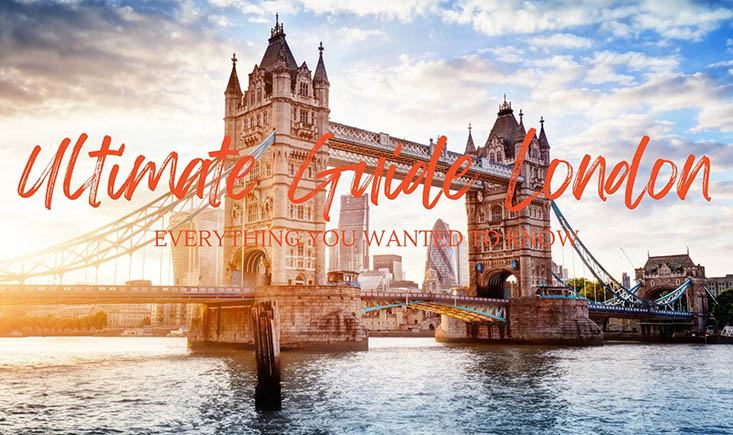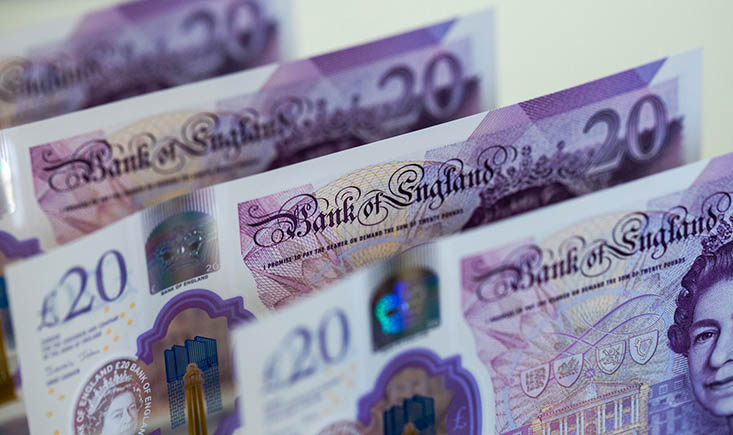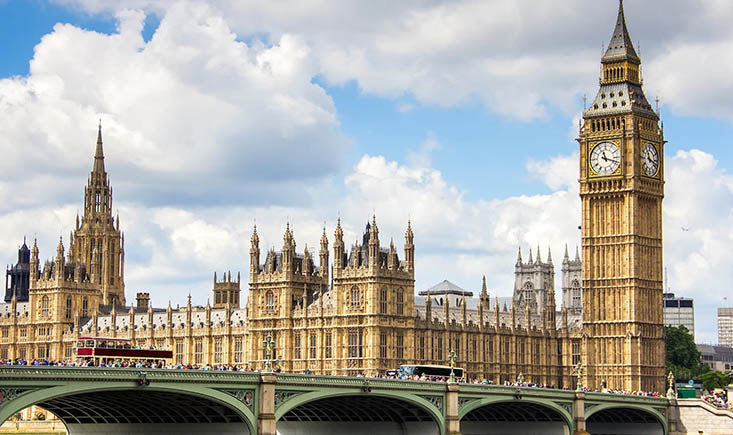
Discovering London: A Complete Travel Guide
Travel TipsLondon, a city that effortlessly blends its rich historical heritage with a vibrant modern culture, is a dream destination for many travelers. My recent trip to London was nothing short of spectacular, offering me a chance to delve into its iconic landmarks, indulge in its diverse culinary scene, and experience its unique local customs.
This comprehensive guide will take you through every detail of planning a memorable trip to London, including essential travel gear, appropriate attire, currency exchange, obtaining a local SIM card, understanding local etiquette, and recommendations for must-visit attractions and street food delights.
Travel Essentials: Packing for London
Travel Gear
When packing for London, it’s essential to consider the city’s variable weather and extensive public transportation system. Here are some key items I found indispensable during my trip:
- Sturdy Walking Shoes: London is a city best explored on foot, so comfortable, waterproof walking shoes are a must.
- Travel Umbrella: London weather can be unpredictable, with sudden showers common, so a compact travel umbrella is essential.
- Layered Clothing: Pack layers to adapt to the changing weather, including a mix of light sweaters, T-shirts, and a waterproof jacket.
- Portable Charger: With so many photo opportunities and the need for navigation, a portable charger ensures your devices stay powered.
- Reusable Water Bottle: Staying hydrated while sightseeing is crucial. Many public places in London have water refill stations.
- Backpack: A small, secure backpack is ideal for carrying your daily essentials while keeping your hands free.
Appropriate Attire
London’s style is chic yet practical. While the city embraces diverse fashion, it’s wise to dress smart-casual for most occasions. Here are some clothing tips based on my experience:
- Comfortable yet Stylish: Think smart jeans, comfortable dresses, and stylish tops. Londoners value both comfort and style.
- Weather-Appropriate: Always check the weather forecast. In winter, bring a warm coat, scarf, and gloves. In summer, light layers and sunglasses are necessary.
- Evening Wear: If you plan to visit upscale restaurants or attend a theater show, pack a dressier outfit. Londoners often dress up for evening outings.
Currency Exchange and Local SIM Card
Currency Exchange
The official currency in London is the British Pound (GBP). I found it convenient to exchange some currency before arriving, but there are plenty of exchange bureaus and ATMs throughout the city offering competitive rates. Here are some tips:

- ATMs: Use ATMs for a better exchange rate compared to currency exchange kiosks. Notify your bank before traveling to avoid issues.
- Exchange Bureaus: Avoid exchanging money at airports due to higher fees. Look for reputable bureaus in the city center.
- Credit Cards: Most places accept credit cards, but having some cash on hand for small purchases or street markets is advisable.
Obtaining a Local SIM Card
Staying connected is crucial, and obtaining a local SIM card is straightforward in London. Here’s how I did it:
- Airport Kiosks: SIM cards are available at major airports, but I found them slightly more expensive.
- Local Retailers: Mobile network stores like EE, Vodafone, and Three offer competitive plans. I visited a Three store and chose a pay-as-you-go plan with ample data for navigation and social media.
- Online Purchase: Some services allow you to order a SIM card online and have it delivered to your accommodation.
Understanding Local Etiquette
Local Etiquette and Customs
Londoners are generally polite and reserved. Understanding and respecting local customs enhances your travel experience. Here are some key etiquette tips:
- Queueing: Londoners strictly adhere to queuing. Always stand in line and wait your turn, whether at a bus stop or in a store.
- Public Transport: On escalators, stand on the right and walk on the left. Offer your seat to elderly or disabled passengers.
- Tipping: Tipping is customary but not obligatory. In restaurants, a 10-15% tip is appreciated if service isn’t included. Tipping taxi drivers and hotel staff is also polite.
- Personal Space: Maintain personal space in public areas and avoid loud conversations, especially on public transport.
- Punctuality: Being on time is important. If you have appointments or reservations, aim to arrive a few minutes early.
Personal Experiences with Local Etiquette
During my stay, I had several encounters that highlighted the importance of local etiquette. Once, while boarding a crowded bus, I inadvertently skipped the queue. A fellow passenger politely reminded me, and I quickly apologized and took my place in line. This experience reinforced the value of patience and respect in London.
Another time, I was dining at a small café and noticed other patrons leaving tips. I followed suit and received a warm thank you from the server, which made me feel appreciated and welcome. These interactions emphasized the importance of observing and adhering to local customs.
Must-Visit Attractions in London
1. The British Museum: A Journey Through Time
Location: Great Russell Street, Bloomsbury, London WC1B 3DG
How to Get There: The British Museum is easily accessible via the London Underground. The nearest station is Tottenham Court Road (Central and Northern lines), a short 5-minute walk away. Bus routes 1, 8, 19, 25, 38, 55, 98, and 242 also serve the area.
Attractions and Highlights:
The British Museum houses a vast collection of art and artifacts spanning over two million years of history. Highlights include the Rosetta Stone, the Elgin Marbles, and the Egyptian mummies. The museum’s galleries are divided into thematic and geographical sections, making it easy to navigate and explore different cultures.
Personal Experience:
During my visit, I was particularly drawn to the Ancient Egypt and Ancient Greece sections. The sheer size and detail of the artifacts were awe-inspiring. I recommend joining a guided tour to gain deeper insights into the exhibits. The museum also offers free entry, making it a budget-friendly option for travelers.
2. The Tower of London: Witness to Centuries
Location: St Katharine’s & Wapping, London EC3N 4AB
How to Get There: The Tower of London is well-connected by public transport. Tower Hill Underground Station (Circle and District lines) is just a 5-minute walk away. You can also take the Thames Clipper riverboat to Tower Pier.
Attractions and Highlights:
The Tower of London is a historic castle and former royal residence known for its rich history and impressive architecture. Key attractions include the Crown Jewels, the medieval White Tower, and the legendary ravens. Guided tours led by the Yeoman Warders (Beefeaters) provide fascinating insights into the tower’s dark and intriguing past.
Personal Experience:
Exploring the Tower of London was like stepping back in time. The highlight for me was viewing the Crown Jewels, which were truly magnificent. The Yeoman Warder tour was both informative and entertaining, revealing intriguing stories and legends. To avoid long lines, I suggest visiting early in the morning or purchasing tickets online in advance.
3. The Houses of Parliament and Big Ben: Icons of Democracy
Location: Westminster, London SW1A 0AA
How to Get There: The Houses of Parliament and Big Ben are located in Westminster, easily reachable via Westminster Underground Station (Circle, District, and Jubilee lines). Numerous bus routes, including 3, 11, 12, 24, 53, 87, 88, 148, 159, and 453, serve the area.

Attractions and Highlights:
The Houses of Parliament, also known as the Palace of Westminster, is a stunning example of Gothic Revival architecture. Big Ben, the iconic clock tower, is one of the most recognizable landmarks in the world. Visitors can take guided tours of the historic building, including the House of Commons and House of Lords.
Personal Experience:
Standing in front of Big Ben and the Houses of Parliament was a surreal experience. The grandeur of the buildings and the sense of history they embody are overwhelming. I joined a guided tour that provided a comprehensive overview of the British political system and the architectural marvels within. Remember to book tours in advance, as they are popular and fill up quickly.
4. The London Eye: A Bird’s Eye View
Location: Riverside Building, County Hall, Westminster Bridge Road, London SE1 7PB
How to Get There: The London Eye is situated on the South Bank of the River Thames, near Waterloo Underground Station (Bakerloo, Jubilee, Northern, and Waterloo & City lines). It is also accessible via Westminster or Embankment stations across the river.
Attractions and Highlights:
The London Eye is a giant Ferris wheel offering panoramic views of the city. Each capsule provides a 360-degree view, showcasing landmarks such as the Houses of Parliament, St. Paul’s Cathedral, and the Shard. The ride lasts about 30 minutes, providing ample time to capture stunning photos and enjoy the scenery.
Personal Experience:
Riding the London Eye was a highlight of my trip. The views from the top are unparalleled, especially at sunset when the city is bathed in a golden glow. For a special experience, consider booking a champagne flight or a private capsule. Online ticket purchases often come with discounts and allow you to skip the line.
Street Food and Safety Tips
Popular Street Food
London’s street food scene is diverse and vibrant, offering flavors from around the world. Here are some must-try street foods I enjoyed:
- Fish and Chips: A classic British dish available at various food stalls and markets. I had a delicious portion at Borough Market.
- Bangers and Mash: Traditional British sausages served with mashed potatoes and gravy, often found at food markets and festivals.
- Indian Street Food: London has a rich Indian culinary heritage. I savored spicy samosas and fragrant biryanis at Camden Market.
- Artisanal Burgers: Gourmet burger stalls are abundant, with creative toppings and high-quality ingredients. I recommend trying the burgers at Street Feast.
- Sweet Treats: Don’t miss out on churros, crepes, and freshly baked pastries. I indulged in mouth-watering churros at Southbank Centre Food Market.

Street Food Safety Tips
While street food is generally safe in London, it’s essential to follow some basic precautions:
- Choose Busy Stalls: Opt for stalls with long lines and high turnover, indicating fresh food and good hygiene practices.
- Inspect Cleanliness: Ensure the stall looks clean, and the food is prepared in front of you. Avoid places where food is pre-cooked and left out for extended periods.
- Check Reviews: Use apps like Yelp or TripAdvisor to check reviews and ratings for food stalls and markets.
- Hydration: Stay hydrated, especially if you’re sampling spicy foods. Carry a reusable water bottle and refill it regularly.
- Allergies: If you have food allergies, inform the vendor and double-check ingredients to avoid any issues.
Planning Your Itinerary and Budget
Itinerary Planning
Planning a well-structured itinerary can help you make the most of your trip. Here’s a sample 5-day itinerary based on my experience:
Day 1: Arrival and Orientation
- Arrive in London and check into your accommodation.
- Take a leisurely walk around your neighborhood to get acquainted with the area.
- Enjoy a welcome dinner at a local restaurant.
Day 2: Historical Landmarks
- Morning: Visit the British Museum.
- Afternoon: Explore the Tower of London.
- Evening: Stroll along the Thames and see Tower Bridge illuminated at night.
Day 3: Iconic Attractions
- Morning: Tour the Houses of Parliament and see Big Ben.
- Afternoon: Ride the London Eye.
- Evening: Dinner at Borough Market and a walk along Southbank.
Day 4: Cultural Immersion
- Morning: Visit the Victoria and Albert Museum.
- Afternoon: Explore the Natural History Museum.
- Evening: Attend a theater show in the West End.
Day 5: Markets and Relaxation
- Morning: Browse the stalls at Camden Market.
- Afternoon: Relax in Hyde Park or visit Kensington Gardens.
- Evening: Farewell dinner at a traditional British pub.
Budget Management
London can be an expensive city, but careful planning can help you stay within your budget. Here are some tips:
- Accommodation: Consider staying in budget hotels, hostels, or Airbnb accommodations. Booking in advance can also yield discounts.
- Transport: Use an Oyster card or contactless payment for public transport. Walking and cycling are great ways to save money and explore the city.
- Meals: Enjoy street food and casual dining options. Look for lunch deals and pre-theater menus for more affordable dining.
- Attractions: Many museums and galleries offer free entry. Purchase attraction passes like the London Pass for combined discounts.
- Shopping: Limit souvenir shopping and focus on unique, meaningful items. Markets like Camden and Portobello Road offer affordable options.
Travel Insurance
Travel insurance is a crucial part of any trip, providing coverage for unexpected events such as medical emergencies, trip cancellations, and lost luggage. Here are my recommendations:
- Comprehensive Coverage: Choose a plan that covers medical expenses, trip cancellations, delays, and personal belongings.
- Reputable Providers: Opt for well-known insurance providers with good customer reviews and reliable support.
- Understand Your Policy: Read the policy details carefully to understand what is and isn’t covered. Check for any exclusions or limitations.
My trip to London was an unforgettable experience, filled with historical landmarks, cultural immersion, and culinary delights. By planning carefully, respecting local customs, and exploring both popular attractions and hidden gems, I was able to fully appreciate the charm and vibrancy of this incredible city.
Whether you’re a first-time visitor or a seasoned traveler, London has something to offer everyone.
You may also like
Recent Posts
- Family-Friendly Hotel Stays in Dundee: Top 5 Picks for Traveling with Kids
- Antiquing Through Time in Dundee: A Wanderer’s Chronicle
- Seaside Delights: Discovering Dundee’s Finest Seafood Restaurants
- A Taste of True Scotland: Discovering Authentic Flavors in Dundee
- Hiking and Nature: The Best Outdoor Activities in Dundee

Leave a Reply